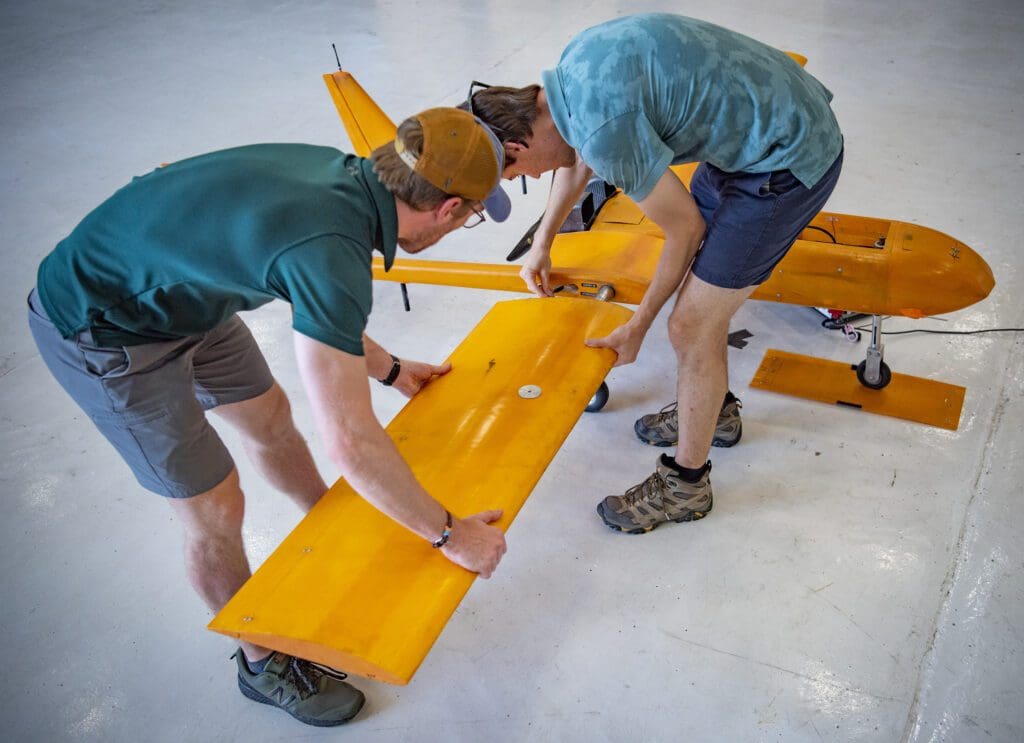
At Eglin United States Air Force Base, Florida, The Osprey Mk III drone made its first autonomous test flight on July 20 as part of a new initiative. An examination of autonomy, data and artificial intelligence (ADAx). The event marked the launch and demonstration of a test platform that allows AI and autonomous software developers to quickly test their algorithms with ADAx. This work is part of the Prime Autonomous Experiment Environment or APEX, a subset of ADAx.
Major. According to Riley Livermore, ADAx test lead, APEX’s goal is to demonstrate the ability to safely and quickly test autonomy and AI in small UAV systems, allowing them to operate in close proximity to other aircraft. Notably, in this test, human operators of the MKIII launched the aircraft and then transferred control to the drone’s autonomous mode.

The main focus of these initial tests was the monitoring function of the autonomous operating systems, programmed to fly outside the limits of user-defined airspace, and whenever that limit was approached, the monitoring function would cut off autonomy and steer the aircraft into a safe position. The point is part of the Test of Autonomy in Complex Environments or its acronym TACE system in English.
TACE is a software component of APEX that acts as an intermediary between the autonomous systems and the aircraft.: Prevents TACE from executing unwanted commands to the aircraft’s autopilot from this mode. Also, you can create more realistic scenarios to test the aircraft without putting it in danger.
For its part, the flight on July 20 was the first of five scheduled flights over three days and 2.7 hours and various test units of the Air Materiel Command participated in verifying the new capability and functionality of the test platform. They were sponsored by AFWERX, and the Air Force Research Laboratory’s Weapons Directorate was in charge of producing the aircraft. 416 Flight Test Squadron was tasked with launching and recovering the MKIII, while 413 Flight Test Squadron conducted tests. In addition, the 96th Operations Support Squadron was instrumental in facilitating the APEX test while manning the airfield.
Col. Tucker Hamilton, commander of the 96th Operations Group and head of Air Force AI trials and operations, said the goal is to prepare Soldiers for a digital future. In particular, other ADAx initiatives are planned, such as the Viper experiment and Next Generation Operating Models (VENOM), along with the Fast Open X-Platform (FOX) project to install open software on aircraft.
This may interest you: British pilots begin their training in the US with new Protector RG Mk1 drones

“Introvert. Thinker. Problem solver. Evil beer specialist. Prone to fits of apathy. Social media expert. Award-winning food fanatic.”





More Stories
Two influencers drown after refusing to wear life jackets: “ruining selfies”
Uruguay 2024 election results: who won and when is the second round | Waiting to know whether there will be a runoff or not
Uruguay: Lacalle Pou leaves with his figure on the slopes | The Marcet and Asteziano scandals hit the right-wing ruler